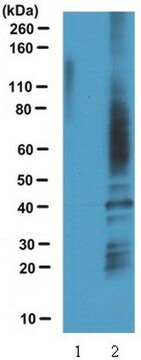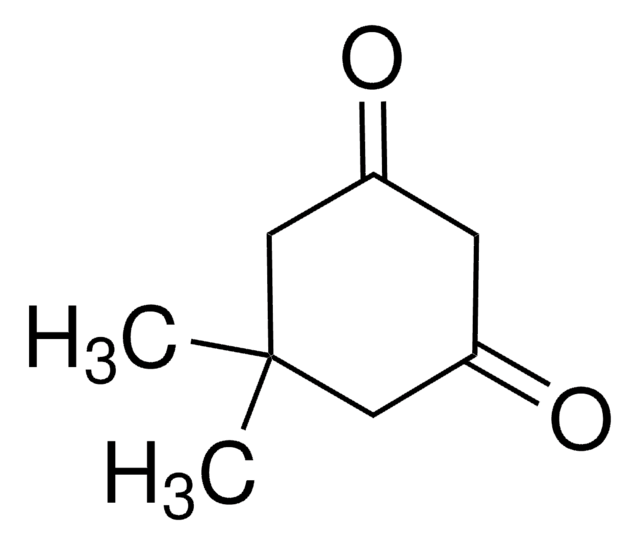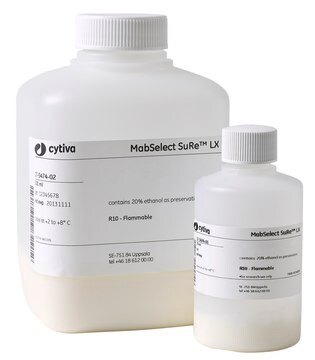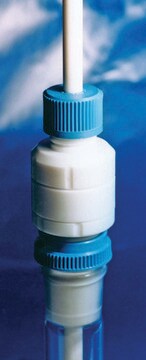07-2139
Anti-Cysteine Sulfenic Acid Antibody
serum, from rabbit
Faça loginpara ver os preços organizacionais e de contrato
About This Item
Código UNSPSC:
12352203
eCl@ss:
32160702
Produtos recomendados
fonte biológica
rabbit
forma do anticorpo
serum
tipo de produto de anticorpo
primary antibodies
clone
polyclonal
reatividade de espécies
mouse, rat, human
reatividade da espécie (prevista por homologia)
mammals
técnica(s)
western blot: suitable
Condições de expedição
wet ice
modificação pós-traducional do alvo
unmodified
Descrição geral
Protein sulfenic acid formation is a reversible post-translational modification that may be used to monitor protein oxidation on reactive cysteines within target proteins. This can be detected with protein sulfenic acid derivatised with dimedone.
Especificidade
This antibody recognizes proteins containing cysteine sulfenic acid derivitized with dimedone.
Imunogênio
Epitope: Other
KLH-conjugated corresponding to cysteine sulfenic acid.
Aplicação
Anti-Cysteine Sulfenic Acid detects levels of Cysteine Sulfenic Acid proteins & has been published & validated for use in WB.
Research Category
Apoptosis & Cancer
Apoptosis & Cancer
Research Sub Category
General Post-translation Modification
General Post-translation Modification
Western Blot Analysis: A previous lot of this antibody detected cysteine sulfenic acid in NIH/3T3 and HEK293 cell lysates.
Qualidade
Evaluated by Western Blot in rat ventricular myocyte lysate.
Western Blot Analysis: 1:10,000 dilution of this antibody detected cysteine sulfenic acid on 10 µg of rat ventricular myocyte lysate.
Western Blot Analysis: 1:10,000 dilution of this antibody detected cysteine sulfenic acid on 10 µg of rat ventricular myocyte lysate.
Descrição-alvo
Multiple kDa are observed that increases with oxidized stress (H2O2).
forma física
Unpurified
Unpurified rabbit polyclonal with 0.05% sodium azide.
Armazenamento e estabilidade
Stable for 1 year at from date of receipt.
Handling Recommendations: Upon receipt and prior to removing the cap, centrifuge the vial and gently mix the solution. Aliquot into microcentrifuge tubes and store at -20°C. Avoid repeated freeze/thaw cycles, which may damage IgG and affect product performance.
Handling Recommendations: Upon receipt and prior to removing the cap, centrifuge the vial and gently mix the solution. Aliquot into microcentrifuge tubes and store at -20°C. Avoid repeated freeze/thaw cycles, which may damage IgG and affect product performance.
Nota de análise
Control
Rat ventricular myocyte lysate
Rat ventricular myocyte lysate
Exoneração de responsabilidade
Unless otherwise stated in our catalog or other company documentation accompanying the product(s), our products are intended for research use only and are not to be used for any other purpose, which includes but is not limited to, unauthorized commercial uses, in vitro diagnostic uses, ex vivo or in vivo therapeutic uses or any type of consumption or application to humans or animals.
Não está encontrando o produto certo?
Experimente o nosso Ferramenta de seleção de produtos.
Código de classe de armazenamento
10 - Combustible liquids
Classe de risco de água (WGK)
WGK 1
Certificados de análise (COA)
Busque Certificados de análise (COA) digitando o Número do Lote do produto. Os números de lote e remessa podem ser encontrados no rótulo de um produto após a palavra “Lot” ou “Batch”.
Já possui este produto?
Encontre a documentação dos produtos que você adquiriu recentemente na biblioteca de documentos.
Hayato Irokawa et al.
The Biochemical journal, 478(7), 1453-1470 (2021-03-23)
Redox regulation of proteins via cysteine residue oxidation is involved in the control of various cellular signal pathways. Pyruvate kinase M2 (PKM2), a rate-limiting enzyme in glycolysis, is critical for the metabolic shift from glycolysis to the pentose phosphate pathway
Claire Maller et al.
Antioxidants & redox signaling, 14(1), 49-60 (2010-06-04)
Protein sulfenic acids (SOHs) are the principal oxidation products formed when redox active proteins interact with peroxide molecules. We have developed a new antibody reagent that detects protein SOHs derivatized with dimedone. Using this new antibody, we found that glyceraldehyde
Nossa equipe de cientistas tem experiência em todas as áreas de pesquisa, incluindo Life Sciences, ciência de materiais, síntese química, cromatografia, química analítica e muitas outras.
Entre em contato com a assistência técnica






